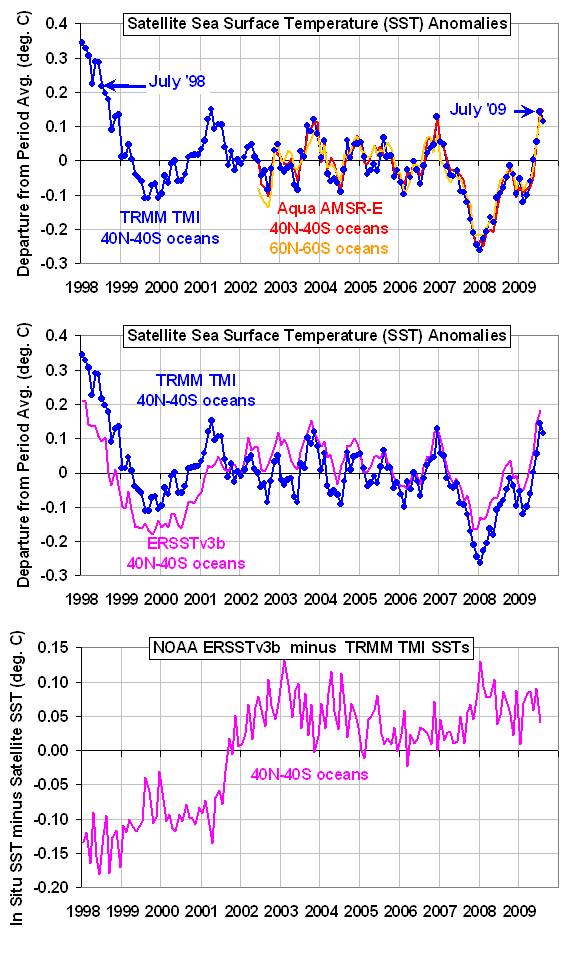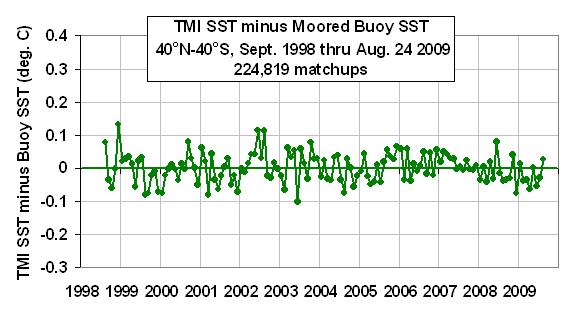IMPORTANT (2:15 p.m. CDT, 8/31/09): The results of this post have been superseded.
After crunching data this week from two of our satellite-based microwave sensors, and from NOAA’s official sea surface temperature (SST) product ERSST v3b, I think the evidence is pretty clear:
The ERSST v3b product has a spurious warming since 1998 of about 0.2 deg. C, most of which occurred as a jump in 2001.
The following three panels tell the story. In the first panel I’ve plotted the TRMM Microwave Imager (TMI) SST anomalies (blue) for the latitude band 40N to 40S. I’ve also plotted SST anomalies from the more recently launched AMSR-E instrument (red), computed over the same latitude band, to show that they are nearly identical. (These SST retrievals do not have any time-dependent adjustments based upon buoy data). The orange curve is anomalies for the entire global (ice-free) oceans, which shows there is little difference with the more restricted latitude band.
In the second panel above I’ve added the NOAA ERSST v3b SST anomalies (magenta), calculated over the same latitude band (40N to 40S) and time period as is available from TRMM.
The third panel above shows the difference [ERSST minus TMI], which reveals an abrupt shift in 2001. The reason why I trust the microwave SST is shown in the following plot, where validation statistics are displayed for match-ups between satellite measurements and moored buoy SST measurements. The horizontal green line is a regression fit to the data. (An average seasonal cycle, and 0.15 deg. C cool skin bias have been removed from these data…neither affects the trend, however.)
I also checked the TMI wind speed retrievals, and there is no evidence of anything unusual happening during 2001. I have no idea how such a large warm bias could have entered into the ERSST dataset, but I’d say the evidence is pretty clear that one exists.
Finally, the 0.15 to 0.20 deg. C warm bias in the NOAA SST product makes it virtually certain that July 2009 was not, as NOAA reported, a record high for global sea surface temperatures.

 Home/Blog
Home/Blog





